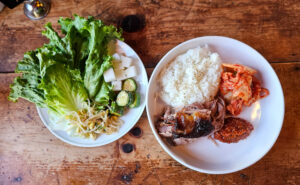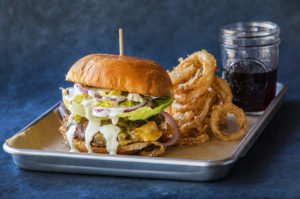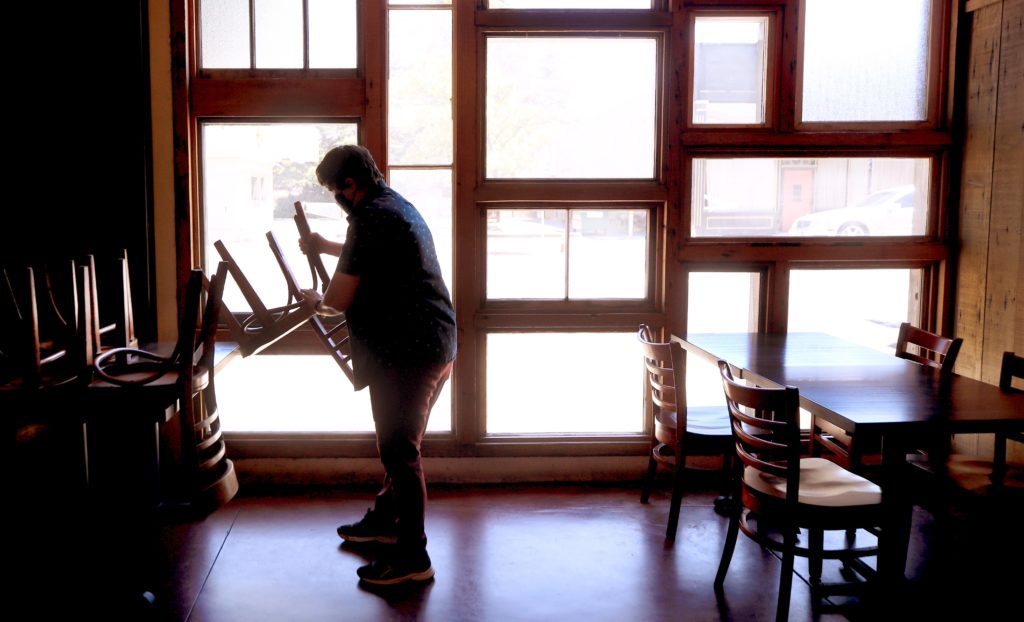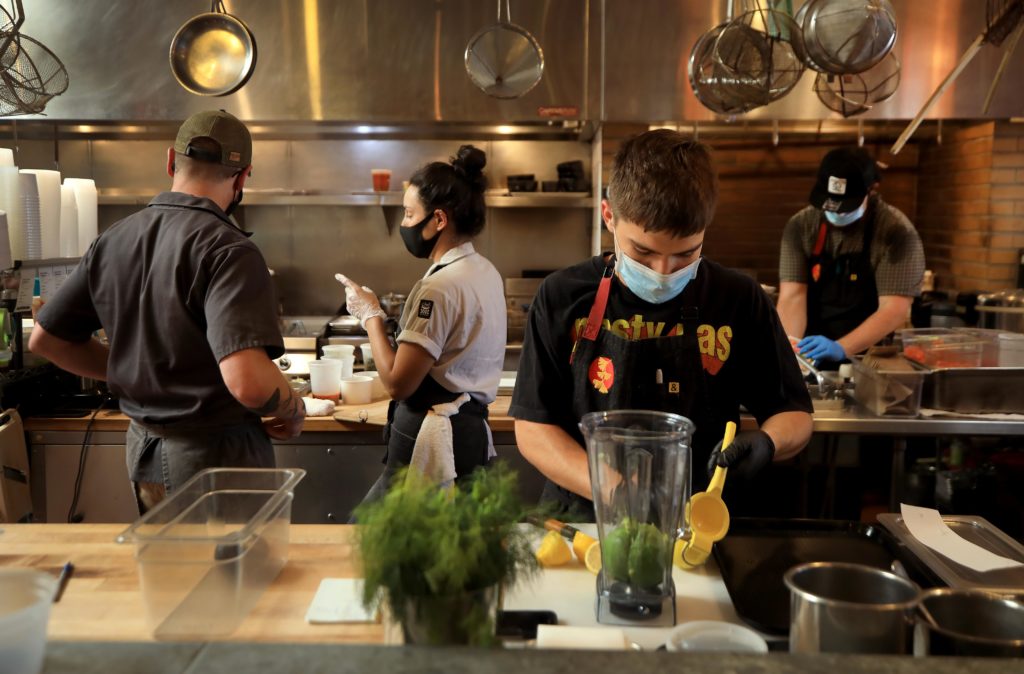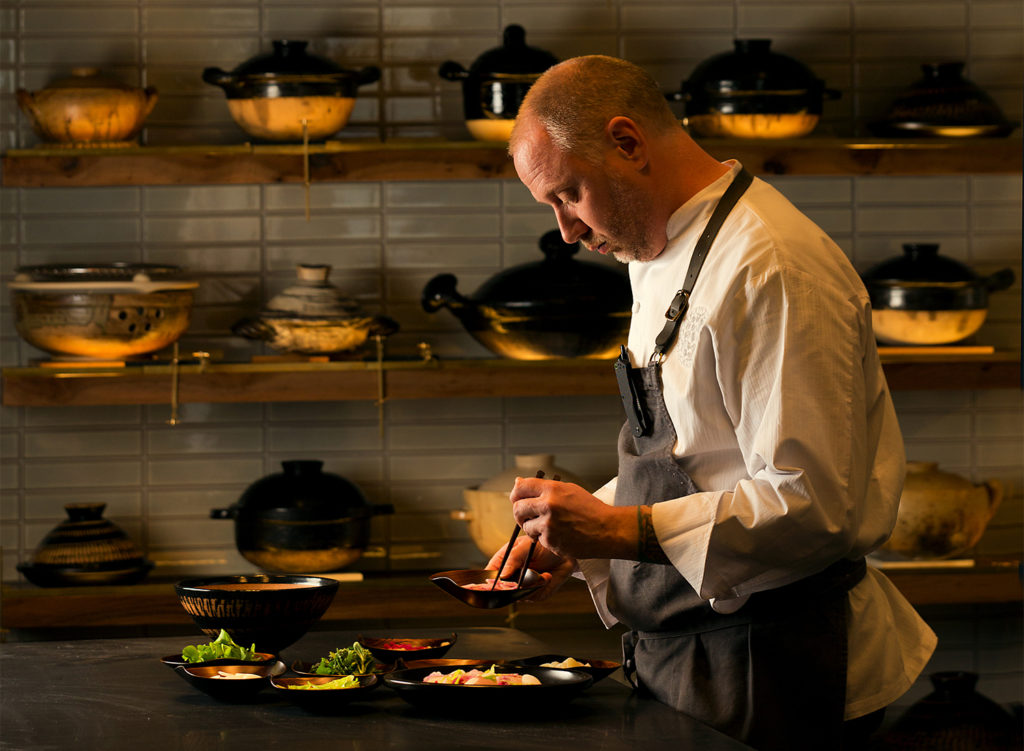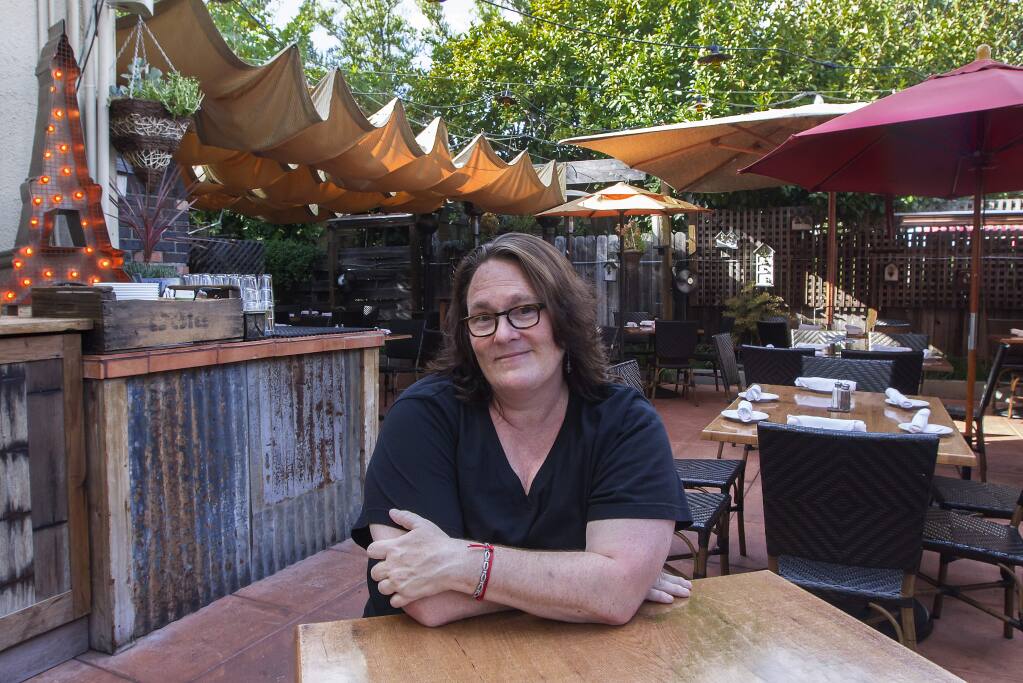Indoor dining at Sonoma County restaurants, only restored weeks ago, may be off the table as soon as early next week as the region’s surging coronavirus caseload sets in motion new restrictions that will likely mark another round of economic hardship for the already devastated hospitality industry.
It’s a bitter pill for restaurateurs who have spent weeks anticipating some semblance of normalcy, painstakingly training staff to comply with the complex maze of state and county protocols required for socially-distanced indoor dining. That’s after months of reworking business plans — sometimes on a daily basis — just to stay afloat and adapt to a business landscape upended in ways few could have imagined.
For most restaurant owners, indoor dining represents the bulk of their business. If it remains off limits for for a prolonged period ‒ and the state default is three weeks to begin with ‒ the make-or-break factor for much of the industry may come down to access to outdoor seating.
That’s daunting for restaurants like Ramen Gaijin in Sebastopol, which has a large indoor space, but only a handful of patio seats in its downtown location.
“It’s like picking and choosing winners,” said Matthew Williams, chef and co-owner. Pointing to restaurants like Petaluma’s Brewster’s, Bravas in Healdsburg or nearby Hopmonk, which have expansive outdoor spaces and ostensibly would be able to stay open, he said that he just can’t compete.
“We have like maybe 30 outdoor seats, and if it’s 90 degrees and there’s no shade, I don’t know if it’s worth it,” he said.
Hundreds of Sonoma County restaurants are facing the fight of their lives amid the pandemic and public health orders meant to curb the spread of a deadly contagion. After being battered by years of wildfires, power shutoffs, floods and the resulting lackluster tourism, it’s surprising that only a handful of restaurants have succumbed during the latest crisis.
But many restaurateurs who have stuck in the game this long are saying they’re not sure if they can hold out much longer, especially as federal aid and loans that have sustained them in the past several months may soon run out.
To survive, most have had to blend unsustainable and often conflicting plans that require outlays of time and money. Many have built patios, redesigned interiors, created entirely new menus and switched to takeout while immersing themselves in creative ways to enact new safety and sanitation requirements.
For Williams that meant spending several weeks transforming his indoor space to seat 75 people in multiple rooms. Opened just a week for indoor dining, the numbers were promising, allowing him to pay staff and keep the lights on.
But now Williams is facing the prospect of having to once again darken his dining room and pencil out how to keep the restaurant going while making no money and pouring cash into the next pandemic pivot.
“This is our family’s paycheck. I just don’t know how long I want to keep pushing if it’s going to deplete everything,” he said.
It’s a similar story for Kyle Connaughton of Healdsburg’s Single Thread Restaurant and Inn. A rising star in the restaurant world with a coveted three Michelin stars, Connaughton’s bespoke dining experiences rely on personal attention to every detail — from the edible centerpieces to custom-made furniture and an open kitchen experience. That’s not something easily done on a windy rooftop patio.
Since April, he’s relied on upscale takeout meals and partnerships with nonprofit groups to keep much of his large staff working and paid, but he estimates that his business is down 70% since last year.
With eased restrictions announced in June, he dedicated himself anew to preparing the restaurant to welcome guests with an entirely different menu and a well-rehearsed protocol for sanitation. Tables this weekend were booked, but he’s girding himself for another dropoff in customers and having to close up again.
“The reality is that closure has deep financial costs, and reopening is a massive investment. The stop-start nature of this (situation) has a deep impact on restaurant businesses and the people who work within them,” said Connaughton.
“We’re all moving from one short-term solution to the next and each just gets more difficult,” he said.
Even outdoor dining isn’t a silver bullet, according to Sondra Bernstein, owner of Girl and the Fig in Sonoma, Fig Cafe and a large catering business. Her California-French cuisine has gained a substantial following in the Bay Area over the past 23 years, and typically she would have about 240 people on staff and $10 million in annual sales, she said.
Now, she’s doing grab-and-go meals, running a food truck and trying to set up picnic tables in a corner of the Sonoma Plaza to keep her business alive.
The town has allowed restaurants to be creative, using the grassy plaza, alleys and walkways for outdoor dining. But Bernstein found part of her walkway space taken over Thursday by PG&E maintenance workers, underscoring the pitfalls of staking out a business on ground she doesn’t control.
By Bernstein’s estimation, she’s spent about $5,000 putting up screens, stanchions, spaced picnic tables and even setting up a remote kitchen that has to be assembled daily to serve diners outside.
“This is money, time and resources we just don’t have. Every day is something else and the rules keep changing,” she said, adding that the business has lost at least $800,000 in the last four months.
“Some days I’m crying my eyes out saying how did I get in this place. Other days, I’m like we got this and we’re great. But this isn’t the business I envisioned having. Serving grab-and-go sandwiches isn’t what we were about. But right now, we’re just trying to make money and keep people employed,” she said.
Some are simply holding their breath and waiting to see what happens next before reopening at all.
Samantha Ramey and her husband opened Americana in Santa Rosa’s Railroad Square just weeks before shelter-in-place orders came down in March. They attempted to focus on takeout, but just couldn’t gain traction and closed the restaurant.
They’re currently working out of their original restaurant, Estero Cafe in Valley Ford. The tiny farm-to-table spot is doing well feeding pent-up city dwellers escaping to the coast for a breath of fresh air.
It’s homey interior has taken a back seat to the outdoor fast-casual experience that many customers now find more suitable if they are to eat out. Diners order at the door and sit on scattered tables outside. But the farm-to-table vision Ramey fostered at the restaurant just isn’t the same, she said, when everything is served on disposable plates and plastic cups.
“I just keep focusing on the fact that this isn’t forever, but it sure doesn’t feel like it’s going to be over quickly,” she said.
With just six indoor tables, Petaluma’s Street Social closed soon after the initial stay-home restrictions, but Marjorie and Jevon Martin are staying afloat selling fried chicken to go. Outdoor dining just wasn’t an option.
“We’ve been watching the rising cases carefully. Better to err on the side of caution rather than to risk staff and guests,” Marjorie said.
That means constantly restrategizing, finding income where they can. The couple have found some support recently as the Black Lives Matter movement has brought them guests who want to support the Black-owned business. Still, it’s not always enough.
“It feels like we’re paddling upstream everyday, but at least we still have a paddle,” she said.
You can reach Dining Editor Heather Irwin at 707-526-8544 or heather.irwin@pressdemocrat.com. On Twitter @biteclubeats.




